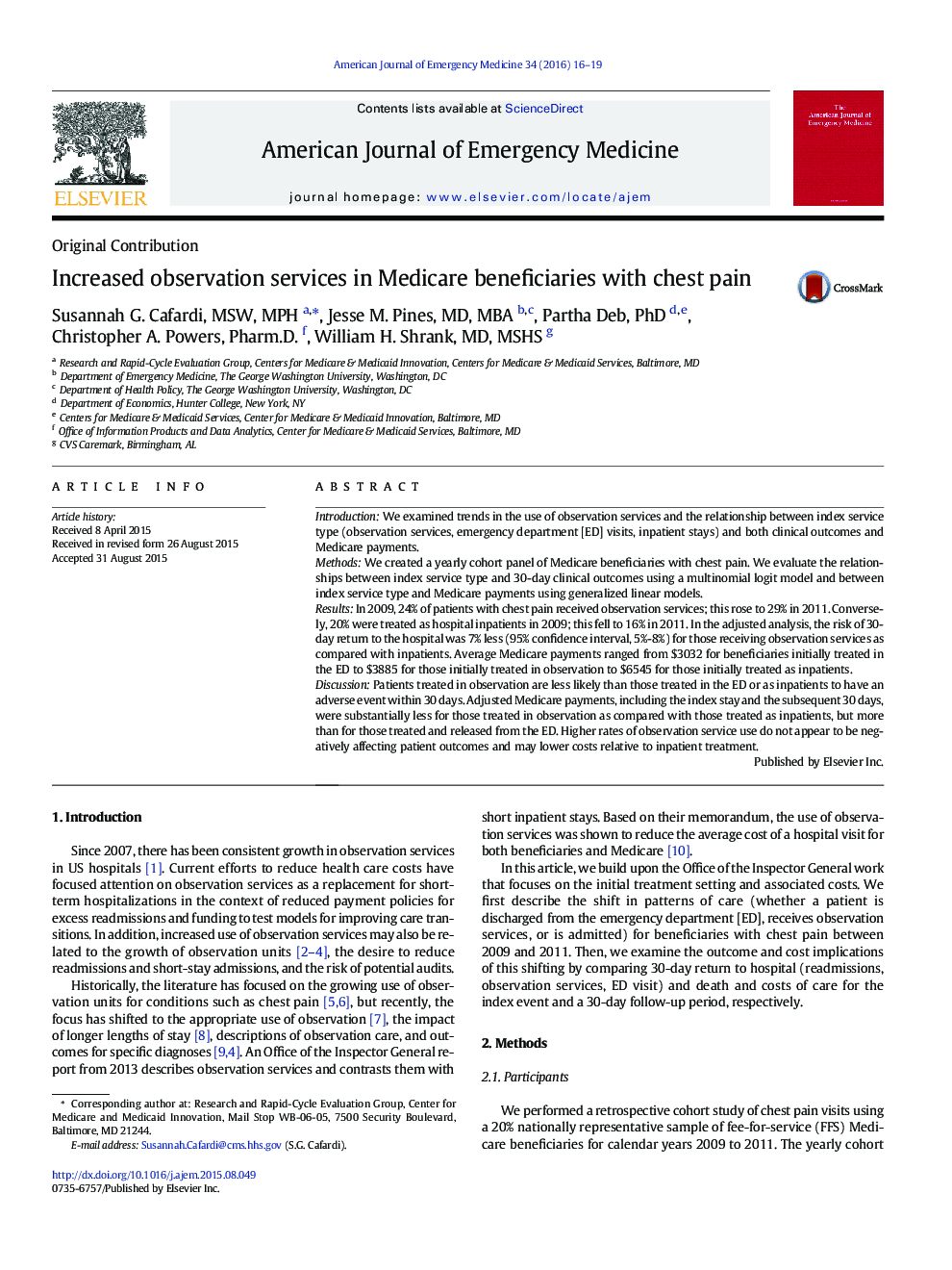| Article ID | Journal | Published Year | Pages | File Type |
|---|---|---|---|---|
| 3223410 | The American Journal of Emergency Medicine | 2016 | 4 Pages |
IntroductionWe examined trends in the use of observation services and the relationship between index service type (observation services, emergency department [ED] visits, inpatient stays) and both clinical outcomes and Medicare payments.MethodsWe created a yearly cohort panel of Medicare beneficiaries with chest pain. We evaluate the relationships between index service type and 30-day clinical outcomes using a multinomial logit model and between index service type and Medicare payments using generalized linear models.ResultsIn 2009, 24% of patients with chest pain received observation services; this rose to 29% in 2011. Conversely, 20% were treated as hospital inpatients in 2009; this fell to 16% in 2011. In the adjusted analysis, the risk of 30-day return to the hospital was 7% less (95% confidence interval, 5%-8%) for those receiving observation services as compared with inpatients. Average Medicare payments ranged from $3032 for beneficiaries initially treated in the ED to $3885 for those initially treated in observation to $6545 for those initially treated as inpatients.DiscussionPatients treated in observation are less likely than those treated in the ED or as inpatients to have an adverse event within 30 days. Adjusted Medicare payments, including the index stay and the subsequent 30 days, were substantially less for those treated in observation as compared with those treated as inpatients, but more than for those treated and released from the ED. Higher rates of observation service use do not appear to be negatively affecting patient outcomes and may lower costs relative to inpatient treatment.
